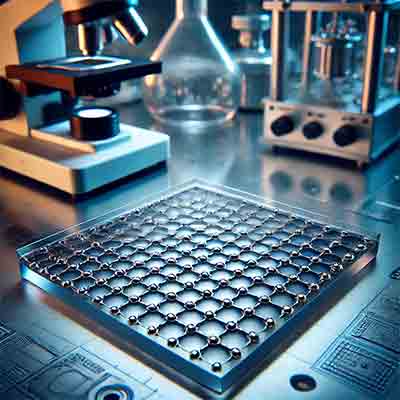SiO2 For MEMS based Energy Harvesting Device
A university student researcher requested a quote for the following  SiO2 coated wafers:
SiO2 coated wafers:
I want 2 inch silicon wafer with different thickness and material deposited in following sequence.
- 2" Silicon wafer p or n type
- Growing upto
500 nanometer SiO2.
- Deposition of Titanium upto
500 nanometer above Sio2.
- Deposition of PZT or ZnO upto
2 micrometer above Titanium.
- Deposition of Titanium upto
500 nanometer above PZT.
Currently I
am working on MEMS based Energy Harvesting Devicewhich will be made
from piezo materials (ZnO or PZT). So please suggest any wafer of 2 inch silicon in your stock so that i can order it.
Reference #120417 for specs and pricing.
SiO2 Deposited on 300mm Silicon Wafers
A Principal Engineer at a solar panel manufacturer requested a quote for the following:
I am interested in buying six 300-mm wafers, either bare wafers or with SiO2. We don’t care about the dopant type, or SiO2 thickness or notch. We do care very much on metal contamination.
Reference #94346 for specs and pricing.
Get Your Quote FAST! Or, Buy Online and Start Researching Today!
What Is SiO2?
Silicon dioxide (SiO2) is a chemical compound composed of one silicon atom and two oxygen atoms. Nature's abundant with this stuff, showing up as quartz and even inside living things. With silica making up a significant chunk of sand, it's no wonder industries have grown to rely on its specialized set of physical and chemical characteristics.
Key properties and uses of SiO2 include:
-
Glass Production: SiO2 is the primary ingredient in glass manufacturing. Glassmaking begins with molten heat, slowly cooled to form a transparent solid. This cooled glass then finds its way into everyday items like windows, bottles, and more.
-
Electronics: High-purity SiO2 is used to manufacture semiconductors and insulators in electronic devices. Silicon chip and integrated circuit production rely heavily on this vital component.
-
Construction: SiO2 is used as a key ingredient in cement and concrete, providing strength and durability to construction materials.
-
Abrasives: Due to its hardness, SiO2 is used in sandblasting and as a filler in abrasive materials like sandpaper.
-
Optics: SiO2 is used in the production of optical fibers and lenses due to its transparency and ability to withstand high temperatures.
-
Health and Food Industry: SiO2 is used as an anti-caking agent in powdered foods and in pharmaceuticals to ensure consistency and flowability of products.
-
Natural Occurrence: SiO2 occurs naturally in various forms, including quartz, cristobalite, tridymite, and lechatelierite, each with unique physical properties.
SiO2 stands out from the pack thanks to its triple threat of advantages. It's impervious to chemical reactions, brutally resistant to wear and tear, and has a melting point that's basically sci-fi. Little wonder it's the material of choice for numerous industries.
How Is SiO2 Used In Semiconductors?
Silicon dioxide (SiO2) plays a crucial role in the semiconductor industry. Its unique properties make it indispensable in the manufacturing and functioning of semiconductor devices. Here are some key ways SiO2 is used in semiconductors:
-
Insulating Layer: SiO2 is used as an insulator between different layers of silicon in semiconductor  devices. Its excellent insulating properties prevent electrical current from leaking between layers, which is critical for the proper functioning of electronic components.
devices. Its excellent insulating properties prevent electrical current from leaking between layers, which is critical for the proper functioning of electronic components.
-
Gate Oxide in MOSFETs: In Metal-Oxide-Semiconductor Field-Effect Transistors (MOSFETs), SiO2 is used to form the gate oxide layer. This thin layer of SiO2 separates the metal gate from the silicon substrate, controlling the flow of current through the transistor. The quality and thickness of this oxide layer are crucial for the performance and reliability of MOSFETs.
-
Dielectric Material: SiO2 acts as a dielectric material in capacitors within integrated circuits (ICs). It stores electric charge and helps in maintaining the stability and performance of the ICs.
-
Passivation Layer: SiO2 is used as a passivation layer to protect the surface of semiconductor devices from contamination and environmental damage. This layer helps in improving the reliability and longevity of the devices.
-
Interlayer Dielectric: In multi-layer semiconductor devices, SiO2 is used as an interlayer dielectric to electrically isolate different conducting layers. This allows for the creation of complex, multi-layered integrated circuits.
-
Doping Process: During the doping process, SiO2 layers can be used to mask certain areas of the silicon wafer, allowing selective doping of the silicon substrate. This process is essential for creating p-n junctions and other semiconductor structures.
-
Etching and Patterning: SiO2 layers are used in photolithography and etching processes to define and pattern specific areas of the silicon wafer. This is a key step in the fabrication of semiconductor devices, enabling the creation of intricate and precise circuit patterns.
The use of SiO2 in semiconductors is fundamental to the performance, efficiency, and miniaturization of modern electronic devices. Its ability to act as an insulator, dielectric, and protective layer makes it a versatile and essential material in the semiconductor industry.

 devices
devices